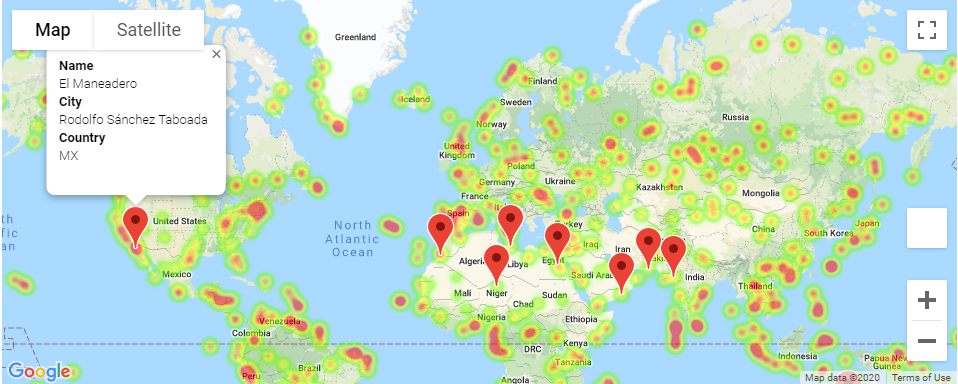Whether financial, political, or social -- data's true power lies in its ability to answer questions definitively. So let's take what you've learned about Python requests, APIs, and JSON traversals to answer a fundamental question: "What's the weather like as we approach the equator?"
Now, we know what you may be thinking: "Duh. It gets hotter..."
But, if pressed, how would you prove it?
In this example, I am creating a Python script to visualize the weather of 500+ cities across the world of varying distance from the equator. To accomplish this, I'll be utilizing a simple Python library, the OpenWeatherMap API, and a little common sense to create a representative model of weather across world cities.
My first requirement is to create a series of scatter plots to showcase the following relationships:
- Temperature (F) vs. Latitude
- Humidity (%) vs. Latitude
- Cloudiness (%) vs. Latitude
- Wind Speed (mph) vs. Latitude
After each plot add a sentence or too explaining what the code is and analyzing. These are inline in the WeatherPy.ipynb file.
My second requirement is to run linear regression on each relationship, only this time separating them into Northern Hemisphere (greater than or equal to 0 degrees latitude) and Southern Hemisphere (less than 0 degrees latitude):
- Northern Hemisphere - Temperature (F) vs. Latitude
- Southern Hemisphere - Temperature (F) vs. Latitude
- Northern Hemisphere - Humidity (%) vs. Latitude
- Southern Hemisphere - Humidity (%) vs. Latitude
- Northern Hemisphere - Cloudiness (%) vs. Latitude
- Southern Hemisphere - Cloudiness (%) vs. Latitude
- Northern Hemisphere - Wind Speed (mph) vs. Latitude
- Southern Hemisphere - Wind Speed (mph) vs. Latitude
After each pair of plots explain what the linear regression is modeling such as any relationships you notice and any other analysis you may have. These are inline in the WeatherPy.ipynb file.
My final notebook must:
- Randomly select at least 500 unique (non-repeat) cities based on latitude and longitude.
- Perform a weather check on each of the cities using a series of successive API calls.
- Include a print log of each city as it's being processed with the city number and city name.
- Save a CSV of all retrieved data and a PNG image for each scatter plot.
Now let's use my skills in working with weather data to plan future vacations. Use jupyter-gmaps and the Google Places API for this part of the assignment.
-
Create a heat map that displays the humidity for every city from the part I of the homework.

-
Narrow down the DataFrame to find ideal weather condition. For example:
- A max temperature lower than 80 degrees but higher than 70.
- Wind speed less than 10 mph.
- Zero cloudiness.
- Drop any rows that don't contain all three conditions. I want to be sure the weather is ideal.
- Note: Feel free to adjust specifications but be sure to limit the number of rows returned by my API requests to a reasonable number.
-
Using Google Places API to find the first hotel for each city located within 5000 meters of my coordinates.
-
Plot the hotels on top of the humidity heatmap with each pin containing the Hotel Name, City, and Country.

Trilogy Education Services © 2019. All Rights Reserved.
